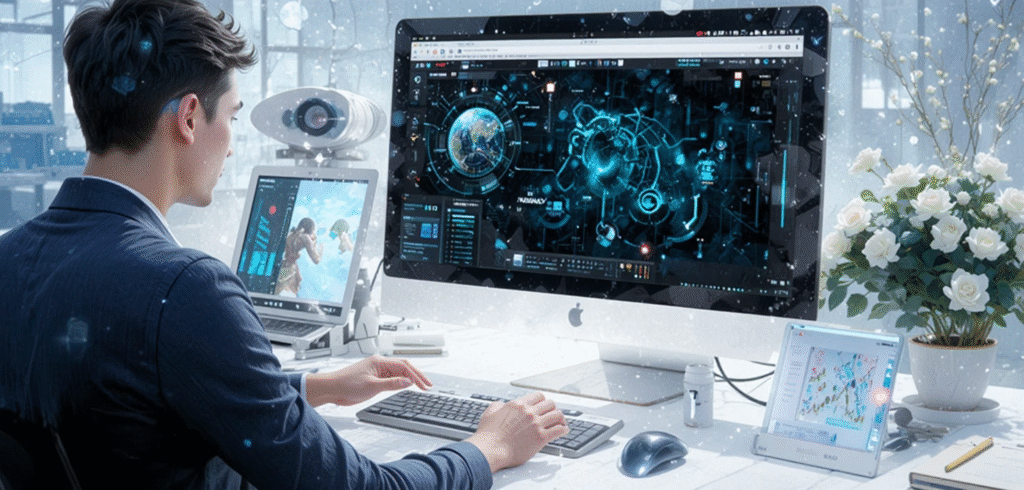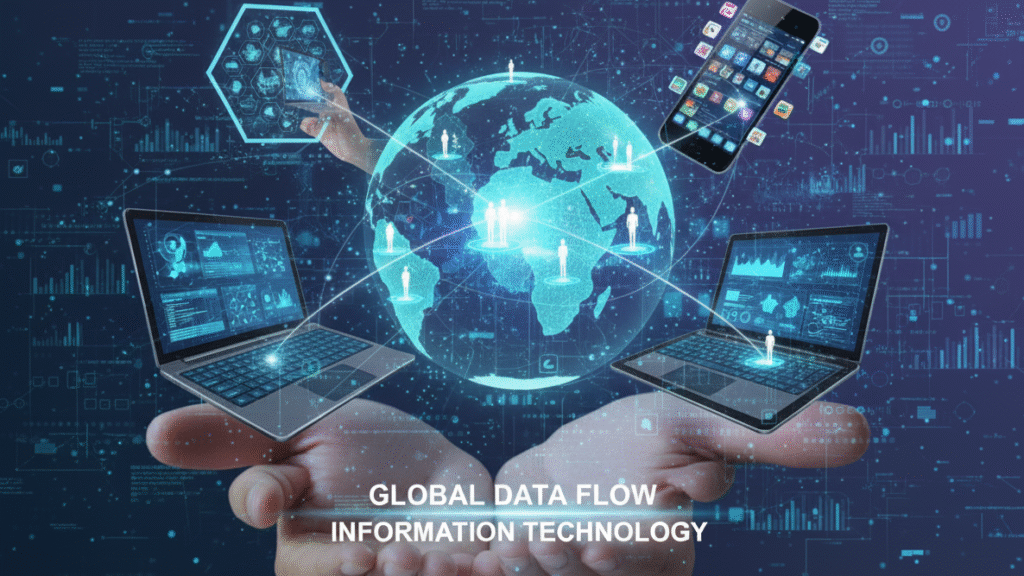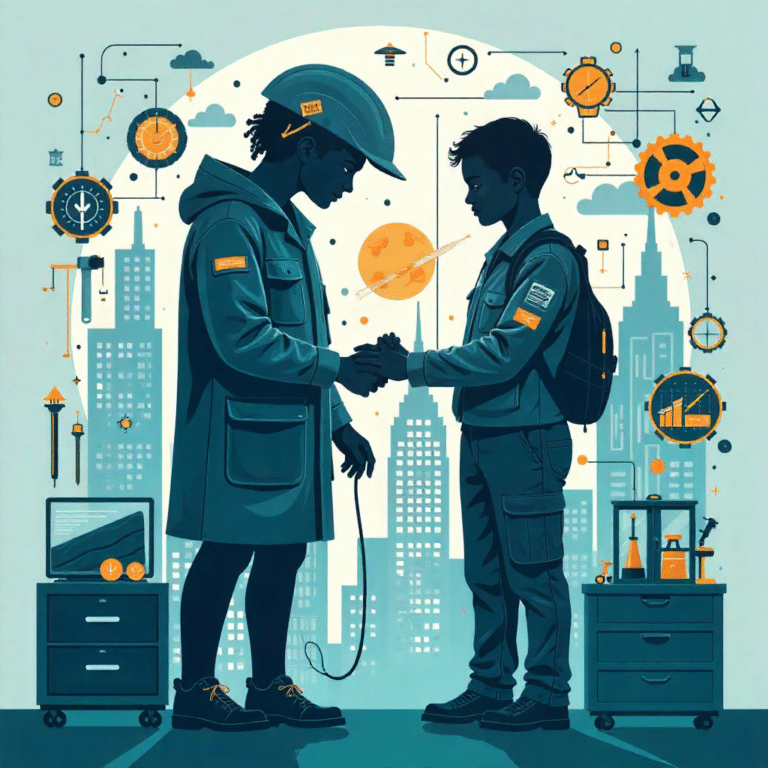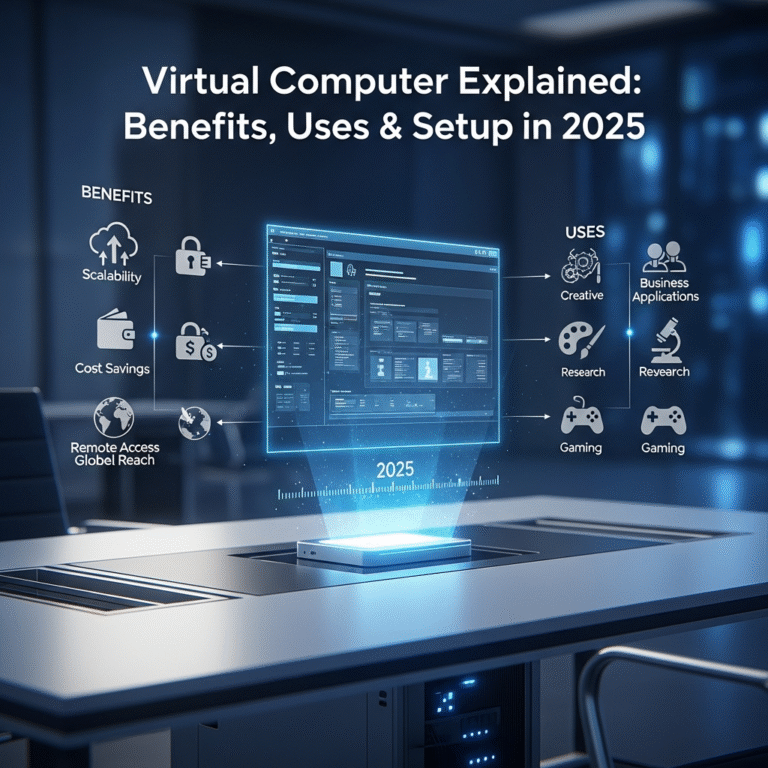Even though technology and information technology (IT) are closely related, many people still wonder how they relate to one another. Information technology focuses on using those tools to store, process, share, and manage information, whereas technology simply refers to the tools, systems, and devices we use to solve problems. Technology advancements over time have fundamentally changed how IT functions, making it quicker, more intelligent, more effective, and more widely available.
Nowadays, practically every industry depends on technology; banking, entertainment, business, health, and education all rely on IT systems. The IT industry is undergoing further change in 2025 as a result of new inventions that are opening up new career paths and ways of working. Businesses, professionals, and students can stay ahead of the curve by comprehending these technological advancements.
Information technology: what is it?
The handling of information through computers, software, networks, and other digital tools is known as information technology, or IT. Information gathering, storing, processing, and delivery are all included in this. For instance:
- When a WhatsApp message is sent
- Do a Google search.
- Watch videos online.
- Do your banking online.
Information technology makes all of these things possible.
How Information Technology Is Shaped by Technology
Technology supplies the systems, tools, software, and hardware needed by IT. IT as we know it today would not exist without technological advancements such as computers, processors, memory devices, servers, routers, cloud platforms, and artificial intelligence.
IT advances in tandem with technological advancements.
Older computers, for instance, were sluggish and occupied whole rooms. These days, we have smartphones that fit in our pockets and are millions of times faster. This has made it possible for IT services to permeate our daily lives, including online offices, cloud storage, video calls, and mobile apps.

Key Modern Technologies Improving IT in 2025
1. Cloud computing
Cloud computing has completely changed how we store and retrieve data. You can store files on the cloud and access them from any location rather than on your computer. Examples include services like iCloud, Dropbox, and Google Drive.
These days, companies use cloud platforms such as
- Web Services by Amazon (AWS)
- Azure by Microsoft
- Cloud by Google
These enable businesses to work remotely, save money on hardware, and safely store vast volumes of data.
2. AI, or artificial intelligence
Computers can think and learn like people thanks to artificial intelligence. It’s utilised in:
- Digital assistants (Alexa, Siri)
- Chatbots
- Recognition of faces
- Autonomous vehicles
- Medical diagnosis
AI in IT aids in task automation, security threat detection, customer service enhancement, and big data analysis for more informed decision-making.
3. ML, or machine learning
AI’s machine learning component enables systems to pick up knowledge from data patterns. For instance:
- Netflix makes movie recommendations based on your browsing history.
- Traffic is predicted by Google Maps.
- YouTube recommends videos.
ML makes IT systems more predictive and easy to use.
4. Technology for Cybersecurity
Cybercrimes rise in tandem with data. Cybersecurity guards against viruses, fraud, data theft, and hacking. Current IT makes use of:
- Firewalls
- Encrypting data
- Secure authentication using face scanning, fingerprints, and OTP
One of the most in-demand industries globally right now is cybersecurity.
5. The Internet of Things (IoT)
Commonplace items with Internet connections are referred to as IoT. For instance:
- Intelligent Televisions
- Smart watches
- Smart cameras for home security
- Intelligent refrigerators
IoT devices improve data collection and automation, communicate with one another, and simplify life.
6. The Blockchain
Bitcoin and other cryptocurrencies are powered by blockchain technology. However, it is now utilised for:
- Safe transactions
- Digital documentation
- Monitoring the supply chain
- Verification of identity
Blockchain improves IT system security and trust because its records are unchangeable.
7. Augmented Reality (AR) and Virtual Reality (VR)
Whereas AR incorporates digital elements into the real world, VR builds a virtual environment. They are employed in:
- Playing video games
- Simulations for training
- Online education
- Design of products
The future of entertainment and education is being shaped by these technologies.
Benefits of Modern Technology in IT
- Quicker Interaction
- Global instant communication is made possible by chats, video calls, emails, and cloud platforms.
- Increased Efficiency Thanks to automation, tasks that previously took hours can now be finished in a matter of seconds.
- Remote Work People can work remotely from any location thanks to cloud computing systems and collaboration tools.
- Improved Precision in Data Processing
- AI facilitates highly accurate analysis of big data sets.
- Improved Security: Business and personal data are safeguarded by sophisticated authentication and encryption.
Difficulties in Contemporary IT
Technology has many benefits, but it also has drawbacks.
- Threats to cybersecurity are growing.
- New technologies necessitate ongoing education.
- During outages, a high reliance on digital systems may lead to issues.
- Concern over data privacy is growing.
Both individuals and businesses need to maintain their systems up to date and use technology responsibly.
IT Technology’s Future
IT has a very bright future. In the upcoming years, we can anticipate:
- Increased automation
- More decision-making based on AI
- More rapid worldwide communication
- Workplaces that are entirely digital
- More intelligent and safe network systems
IT will continue to change as technology advances.

In conclusion
Information technology is heavily influenced by contemporary technology. The IT industry is growing faster, smarter, and more efficient thanks to innovations like cloud computing, blockchain, cybersecurity, IoT, AI, and machine learning. In addition to revolutionising businesses, these innovations are also changing daily life by facilitating communication, enhancing data security, and providing countless opportunities for education and employment.
It’s critical to continue learning, stay current, and adjust to new technologies in order to remain relevant in this rapidly evolving digital world. Information technology has a bright future, and those who embrace innovation will set the standard.





